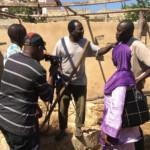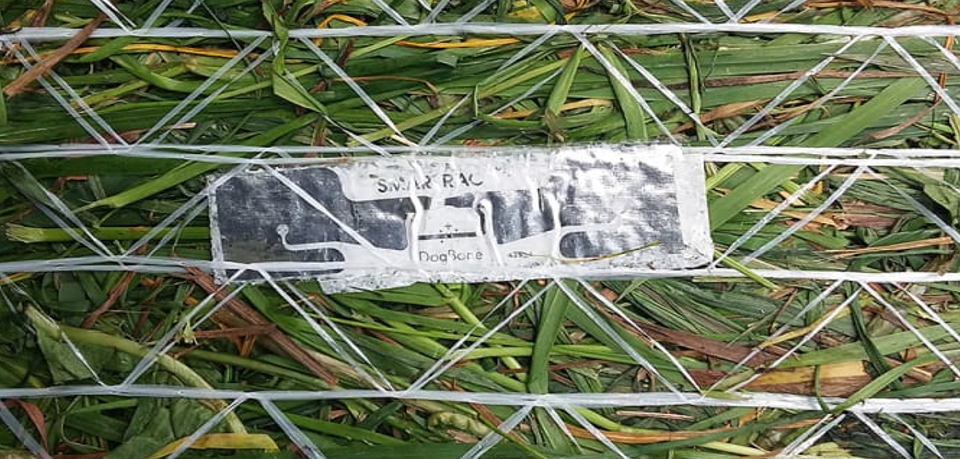
Quoc-Bao Tran & Katariina Penttilä
Having developed and widely involved in agriculture for the last decade, technology still lacks of application on life cycle individual crop management. Therefore, Digibale (Digipaali) is proudly one of the pioneers in this branch, which not only reduces farmers’ labor but also enhances agricultural products’ values. Having Digibale in their silage bales harvesting and storing processes, farms can remove unnecessary color plastic wrappers and unpleasant-looking sprays, and yet be able to electronically keep tracks of environmental data such as temperature, humidity, pH level, dry matter, location, etc. on every single bale. Besides, data is stored and visualized on a website, enabling easy accessing, modifying and viewing them in a unique yet informative way. Research-wise, the project also collects data for silage bales’ quality analysis and studies their effects on RFID tag performance.
Being the cooperation between Ministry of Agriculture and Forestry of Finland, Natural Resources Institute Finland, and Häme University of Applied Sciences, Digibale takes advantages of software engineering, and radio frequency identification (RFID) technology especially, to bring agriculture closer to the digitalization movements. In the first year of the two-year research project, a system was built to measure environmental conditions, combine them with read RFID tags, and at the same time save data on the cloud database. A website was designed to display collected data, together with smartphone application for viewing data with portable RFID reader. The target of the project is initially achieved, further stages are planned and will be conducted to be carried out in the future.
Project overview and needs
Digitalization has not previously been applied in any silage bale marking and information handling. Normally, farmers categorize groups of bales using different colour plastic covers, and sprays. This manual process is, without a doubt, time-consuming and inefficient. In addition to that, bales storage and trading are problems farmers have to deal with. Digipaali (Digibale) project takes the advantages of information technology in general, Internet of Things (IoT) in particular, to reduce the unnecessary hard work and improve process performance. Standing in the heart of the project is radio frequency identification (RFID) technology, of which small rectangular tags will be attached to bales. Users can then read bale data, e.g. temperature, humidity, dry matter, GPS-data via smartphone with special RFID readers, and make transaction on an open e-marketplace (Suokannas, 2018).
In the first stage of the project, we made a system that can automatically attach RFID tags to every bale and collect their related environmental information. This is done using designed box containing RFID readers, sensors, Arduino, Raspberry Pi, 4G modem, and power inverter.
RFID application in silage bale management
Radio-frequency identification technology, with its electromagnetic-based tracing method and distinct characteristic of target’s embedment, is considered a promising solution for improving the silage bale management process. The tracking process of the silage bundles is intended to take advantage of the electromagnetic operating principle of anti-obscured sensing to reduce the need for brute force tracking, which has been frequently carried out in a rather manual and time-consuming manner. (Finkenzeller, 2003). As a result, without having the requirement of being scanned directly like barcode, RFID tags are capable of direct integration into tracking objects, hence the implementation of such system is assessed as an inexpensive and effortless procedure.
The fascinating operating principle of the RFID technology could be understood through the explanation of its hierarchy. A complete operation of an RFID system evolves around the relationship between two of the system’s most crucial devices: reader and tags. Each RFID tag is embedded with a radio frequency circuit capable of performing radio-wave-based communication with the reader in two opposite manners. Passive RFID tags derive radio-wave signalling to power the tags inner circuits from the propagated radio signal emitted by the RFID reader. On the contrary, active RFID tags are provided with their own power supply unit for self-operation purposes, which include long-distance interval signal broadcasting. This could be considered as a compensation feature since implementing the aforementioned RFID tags introduces more complexity to the overall hierarchy. Making use of wireless communication, tag-attached silage bales can be traced by reader within the range of up to ten meters.
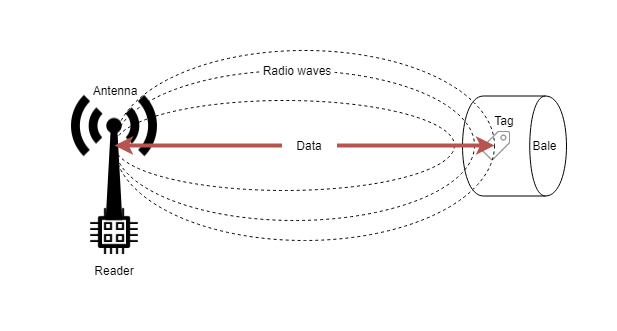
Each RFID tag has four memory banks (Figure 2): reserved, tag identification (TID), electronic product code (EPC), and user memory. All data is stored in these banks housed by chipsets having same basic principles. Bank 0, reserved memory, holds kill and access password of a tag. These passwords allow tags to be silenced or in secured state. Their default value is zero, at which operations will not be executed. Bank 1, EPC memory, gives the object it attached on a unique identification all over the world, regardless of time. Its length varies 96 bits to 496 bits. Later on, when being attached to bales, EPC memory will hold new value indicating identification of the unique farm, baler, and bale. Bank 2, TID memory, identifies the tag uniqueness itself, with 32 to 80 bits. This means an object with several RFID tags on it can have a similar EPC memory, but not an identical TID memory. Bank 3, user memory, is where all other optional information, such as temperature, date, manufacturer, etc are placed. It is sized from 512 bits to 8K.
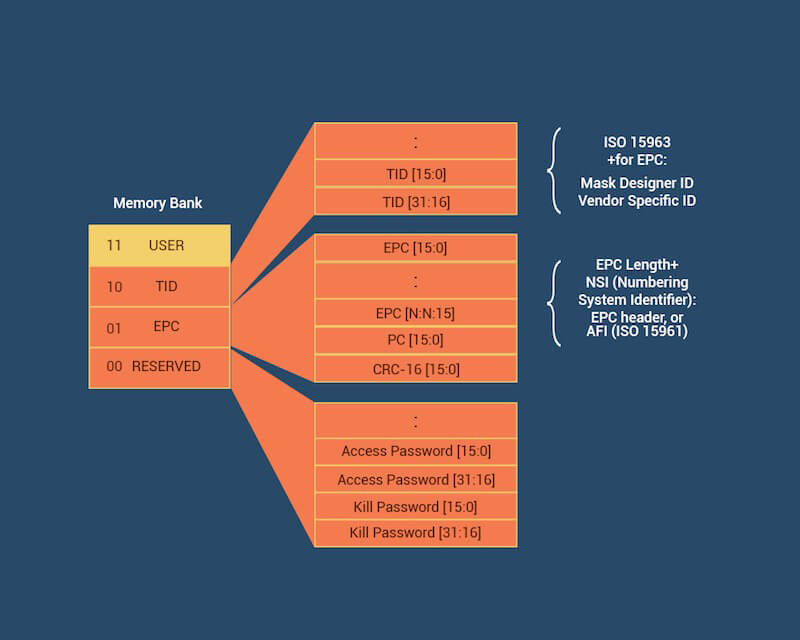
Hardware requirements
In terms of power source, the box uses 12VDC power supply from tractor socket. Therefore, an inverter is used to distribute electricity to other components. As for internet connection, each box has a 4G device, allowing boards to communicate with each other, and Raspberry Pi to send bales information to database.
Nordic ID product Sampo S2 One-Series (Figure 3), as the RFID reader, provides powerful reading performance with multiple connectivity options. What makes this fixed UHF reader stand out from RFID devices of other companies, is the way Nordic ID support their customers. For example, in addition to human-friendly documentations on guidance, safety and regulation, drivers, firmware, they have developed a user interface where you can find all information you might want to know about your running reader, from real-time system information, log files, hardware management to networking, system service, applications, etc.
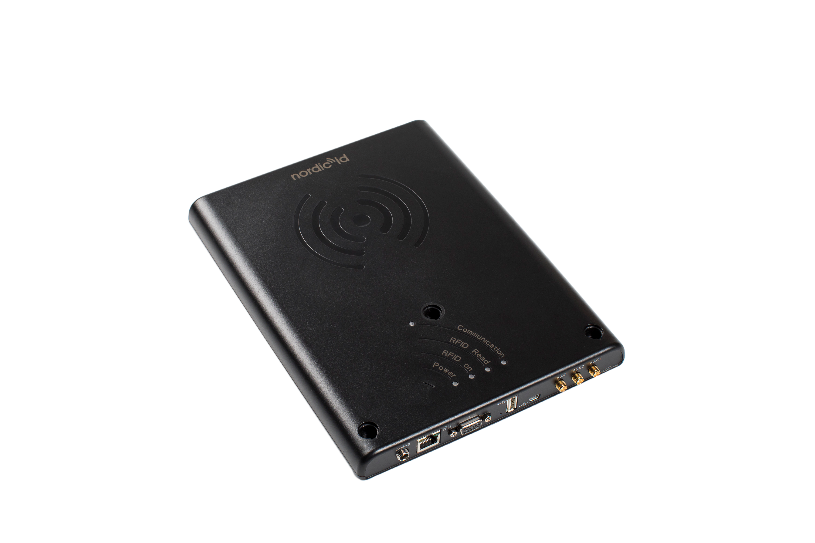
At the moment, two sensors are being used, giving data of three quantities including bales temperature, humidity, and location. Sparkfun Qwiic GPS Titan X1 (Figure 4) is a GPS sensor that gives not only highly accurate GPS data but also other data under NMEA standard. Telaire Amphenol Advanced Sensors T9602 (Figure 5) are fully calibrated and temperature compensated sensor of which resolutions are ±2% RH and ±0.3°C. These sensors are waterproof and can work well under harsh environment due to silage bale features.
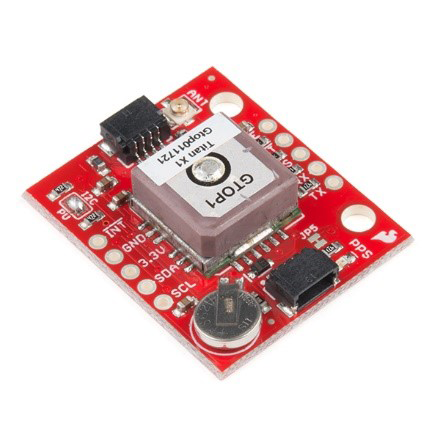
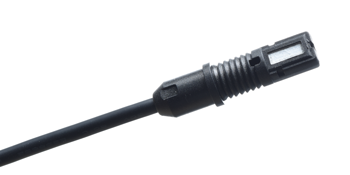
Arduino Wemos D1 R2 Mini (Figure 6) acquires data from sensors through inter-integrated circuit (I2C) bus then publishes to message queuing telemetry transport (MQTT) broker hosted by Raspberry Pi. This is possible because the board has on it an ESP8266 module, which connects to Wi-Fi network and makes simple TCP/IP connections.
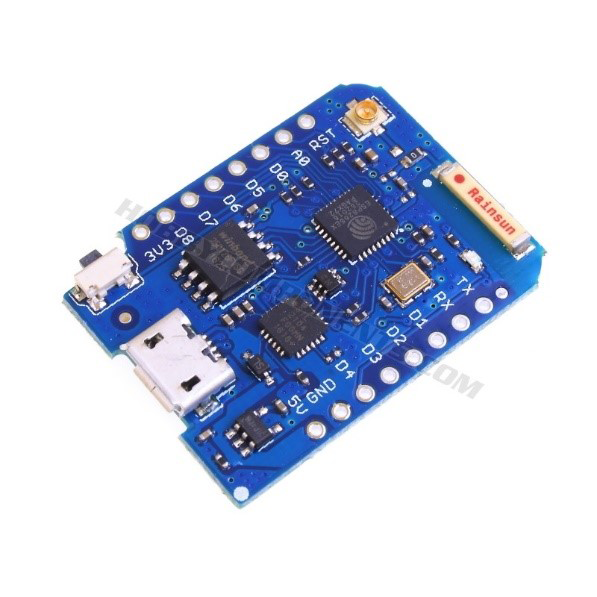
Besides hosting an MQTT broker, Raspberry Pi (Figure 7) runs Node-RED, handling all messages published from Arduino and RFID reader, passing data to corresponding bales, and sending them to database using Azure IOT Hub requests.
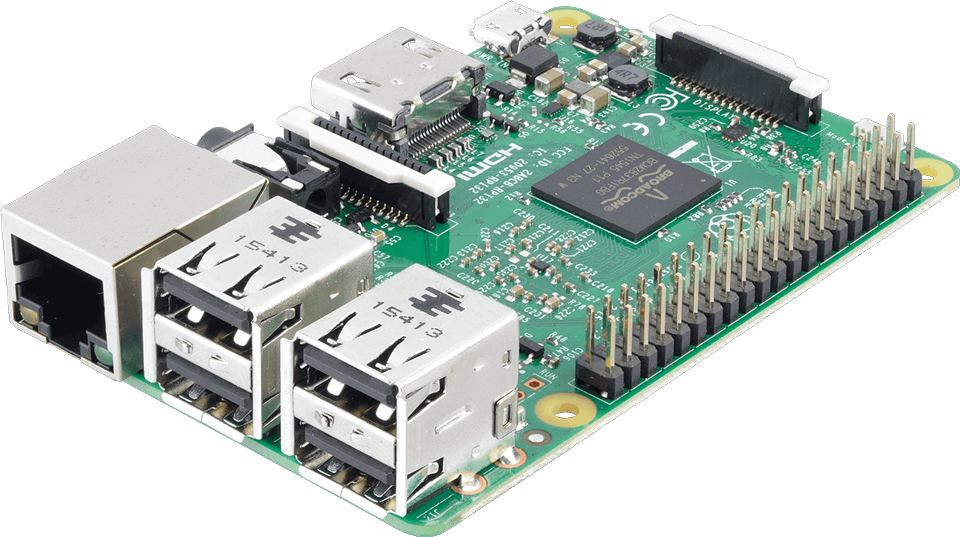
Technical solution
Algorithm and procedure
After the tags have been read by a reader and environment data has been measured by sensors, they will be published to an MQTT broker, to which Node-RED nodes subscribe. These nodes handle all incoming data and process them, which is showed in figure 8. The main idea is that after every tag on the bale being read, all of them will be attached with the same new ID and other data. Due to that, later on, when the farmer scans tags, all tags on the same bale will have the exact identical information to avoid confusion. In the last stage this data will be stored to an Azure database.

It is possible for the Node-RED flow on Raspberry Pi to communicate with the cloud server because of a database developed by a project developer using Azure IOT Hub, an open cloud platform helping users to connect and automate their IOT devices (Microsoft Azure, n.d.). In the database, data can be handled and sorted as desired, hence making it easy to response hypertext transfer protocol (HTTP) requests from web. Besides, since the platform provides unique authentication for each device, the security of the system is enhanced, and data leaking is avoided. Meanwhile, communication between a website or smartphone application and database is done by an application program interface (API). The used API in the project is made using Swagger (Figure 9), an open source software framework that allows users to design their own representational (REST) APIs. These APIs give systems and users the permissions to add, modify, acquire, or delete data from database by requests known as POST, PUT, GET, and DELETE respectively. In the web service and smartphone application of the project, these requests make it more easily to handle data and other information.
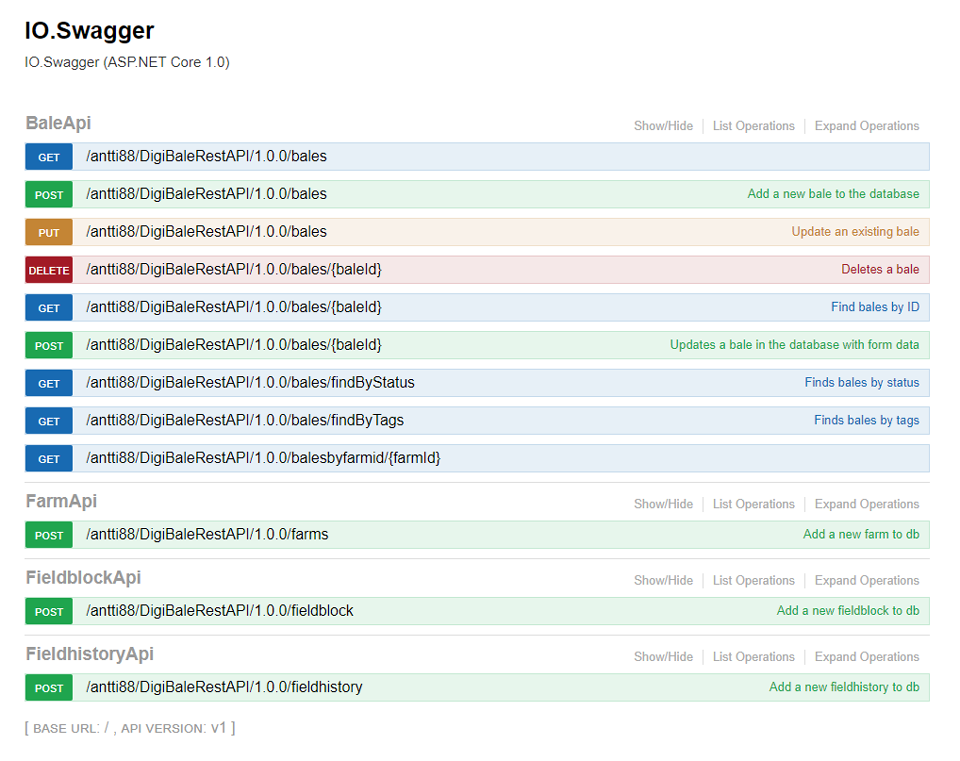
Communication
The communication protocol between devices is MQTT, which is superior to other options because of its light-weightness, effectiveness and popularity. Advanced message queuing protocol (AMQP) is simply a robust and large-scale version of MQTT, which makes its reliability and interoperability redundant because each tag wrap process only requires four to five messages.
Meanwhile, streaming text oriented messaging protocol (STOMP) does not deal with topics but destination strings, with which brokers have to deal internally and leads to difficulty when porting code between brokers (Piper, 2013). Whereas, constrained application protocol (CoAP), despite being more secured and having a longer transmit cycle, allows only four types of messages, which makes it unreliable, and sophisticated (Kanungo, 2016). With these being said, it is clear that MQTT is the prime choice of all.
Implementation
After planning the idea, a real RFID box was made and tested to be realized in a farm field environment. For users to easily control the box, a two-button interface was also added. They are wired to two corresponding relays, signalling Arduino board to function rightly. Buttons work so that when the red one is pressed, the box starts publishing all recognized tags to an MQTT broker with information as showed in figure 10. These data are saved under an array in Node-RED until environment information (Figure 11) are published by pressing blue button. After that, Node-RED will automatically pass a new ID to every single tag and post them to database, together with sensors data. Besides the bale ID, temperature, humidity, longitude, latitude, a post also includes time, size, weight, colour, dValue, farm ID and so on. Each tag is saved as an object of properties in the database. As reading range is up to ten metres, the box can cover a large area and make sure not to miss any tag on bales. In the following the structure of mentioned data is presented. More properties might be included later if necessary.
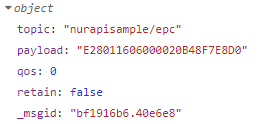
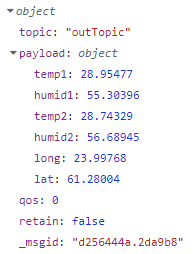
The data handling stage was successfully done and tested. Hereafter, data will be utilized in the next steps, where users are expected to view processed data and work with designed interface on smartphone and website.
Field piloting
In September 2018, a project meeting was held in Pälkäne, Finland demonstrating the system’s work flow in real working situation. After each bale had been wrapped, their locations and information were measured and updated instantaneously on database and website, as showed in figure 12. The project developer was responsible for operating the Digibale box, beside the farmer in tractor’s main seat, who later would use the box himself after being instructed. In addition to 32 wrapped bales during the meeting, data of a hundred more bales were collected in the following day, making them the first digibales ever.
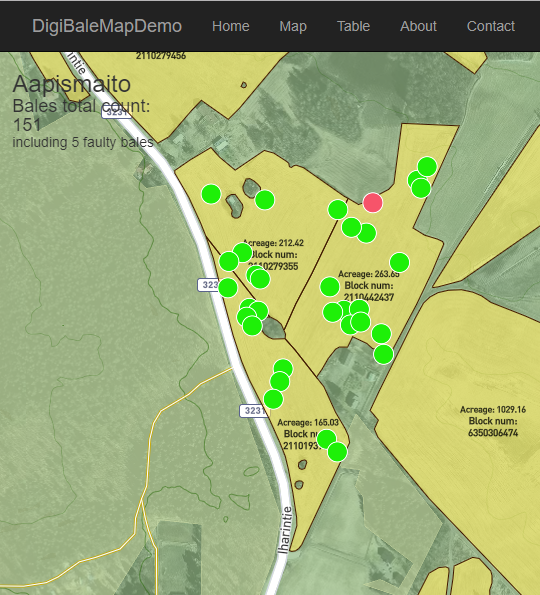
Data utilization
Bale finding
As RFID tags are now attached to bales, farmers can read information using portable RFID readers. For the current project, we are using one produced also by Nordic ID, who supports customers with their ready-made smartphone applications available on Android as well as iOS. With these apps, users can find all tags in the reading range of the reader. A single tag can be tracked if the farmers want to know on which bale the tag is. Not only that, but it is also possible to change tags ID, provided users have authentication.
Moreover, we have added functions to those apps so that farmers can view information about being-scanned bales such as how warm and humid it is, where and by whom it was collected, etc. If information is no longer correct, e.g bales were moved to collecting points, or barns, it is also possible for farmers to modify them too. This was done thank to the APIs mentioned above.
Website and analysis potential
As mentioned earlier, all data will be displayed on a website, where bale owners can view the information. At the moment, the web contains a table of all tags saved in database, and their positions on map. However, later on, due to security issues, few tag properties will be only available to farm owners or accesses with special authorization. More importantly, users are expected to trade bales on the website which means that all the stages from choosing products, contacting between sellers and buyers to making transaction will be digitalized.
Along with that, all bale-related data under different categories such as the year of harvesting, type, crop, etc. will be logged for analysis. This means that the project helps farmers not only to handle their silage bales easier, but also to know how to get better silages in next seasons.
Conclusion
The system of a bale-marking box could be applied to a variety of farm-related operations. It was made to attach temperature, humidity, GPS-data to corresponding bales, along with farm information using RFID reader, sensors, Wi-Fi module, microcomputer. In the future, buttons are expected to be replaced by camera vision, triggering the marking process to start, so as to reduce tasks for farmers and avoid unexpected fault. Having this device in their silage bale handling process, users have several advantages, such as cloud-based data storage, online bale business, and analytic bale data sharing for silage bale improvement.
Looking at what has been done and plans for upcoming stages, it is clear that Digibale is a great step in the digitalization of agriculture. It reduces the farmers’ tasks yet execute them in an efficient, environment-friendly, and cost-saving way. Digibale is expected to significantly contribute to the development of individual crop management in the trend of Internet of Things.
This article was produced in the EIP Agri project “Digipaali”, supported by the Ministry of Agriculture and Forestry of Finland. The beneficiary in the project is HAMK Bio, in Häme University of Applied Sciences (FI), and the partners are HAMK Tech and HAMK Smart research units. In addition, the project has an active innovation group comprising regional farmers and relevant stakeholder companies. The project is implemented during 1.1.2018–31.12.2020.
Authors
Quoc-Bao Tran works as a student assistant at Energy Efficiency Research Group, HAMK Tech Research unit. His research interests include IoT-based smart agriculture and machine learning applications. He also is a student in the Electrical and Automation Engineering degree programme at HAMK since 2016.
Katariina Penttilä acts as Principal Research Scientist and leads Energy Efficiency Research Group in HAMK Tech Research Unit. She also teaches metrology in Electrical and Automation, and Bioeconomy Engineering Degree Programmes, HAMK. She holds PhD and MSc degrees in Electrical Engineering from Tampere University of Technology, Finland, in 2006 and 2002 respectively.
References
Amphenol. (n.d.). Telaire T9602 | Humidity & Temperature Sensor. Retrieved November 28, 2018, from https://www.amphenol-sensors.com/en/telaire/humidity/527-humidity-sensors/3224-t9602
Finkenzeller, K. (2003). RFID Handbook. Munich: John Wiley and Son.
Hobby Components. (n.d.). WeMos D1 Mini Pro ESP8266 Development Board. Retrieved November 28, 2018, from https://hobbycomponents.com/development-boards/864-wemos-d1-mini-pro-esp8266-development-board
Juntunen, A. (2018). Digibale Map Demo. Retrieved November 28, 2018
Kanungo, A. (2016). What are the pros and cons of MQTT versus CoAP as IoT protocols for resource-constrained devices? Quora. Retrieved November 28, 2018, from https://www.quora.com/What-are-the-pros-and-cons-of-MQTT-versus-CoAP-as-IoT-protocols-for-resource-constrained-devices
Microsoft Azure. (n.d.). Azure IoT Hub. Retrieved November 28, 2018, from https://azure.microsoft.com/en-us/services/iot-hub/
Nordic ID. (n.d.). Nordic ID Sampo. Retrieved November 28, 2018, from https://www.nordicid.com/en/home/products-barcode-uhf-rfid-reader-writer/fixed-area-readers/nordic-id-sampo
Piper, A. (2013, February 19). Choosing Your Messaging Protocol: AMQP, MQTT, or STOMP [Blog post]. Retrieved November 28, 2018, from https://blogs.vmware.com/vfabric/2013/02/choosing-your-messaging-protocol-amqp-mqtt-or-stomp.html
Raspberry Pi. (n.d.). Raspberry Pi 3 Model B. Retrieved November 28, 2018, from https://www.raspberrypi.org/products/raspberry-pi-3-model-b
RFID 4U. (n.d.). EPC Gen2 Memory. Retrieved November 28, 2018, from https://rfid4u.com/rfid-basics-resources/epc-gen2-memory
SparkFun. (n.d.). SparkFun GPS Breakout – XA1110 (Qwiic). Retrieved November 28, 2018, from https://www.sparkfun.com/products/14414
Suokannas, A. (2018). Digibale – efficiency in life cycle control of forage bales. Retrieved November 28, 2018, from https://www.luke.fi/en/projects/digipaali/

